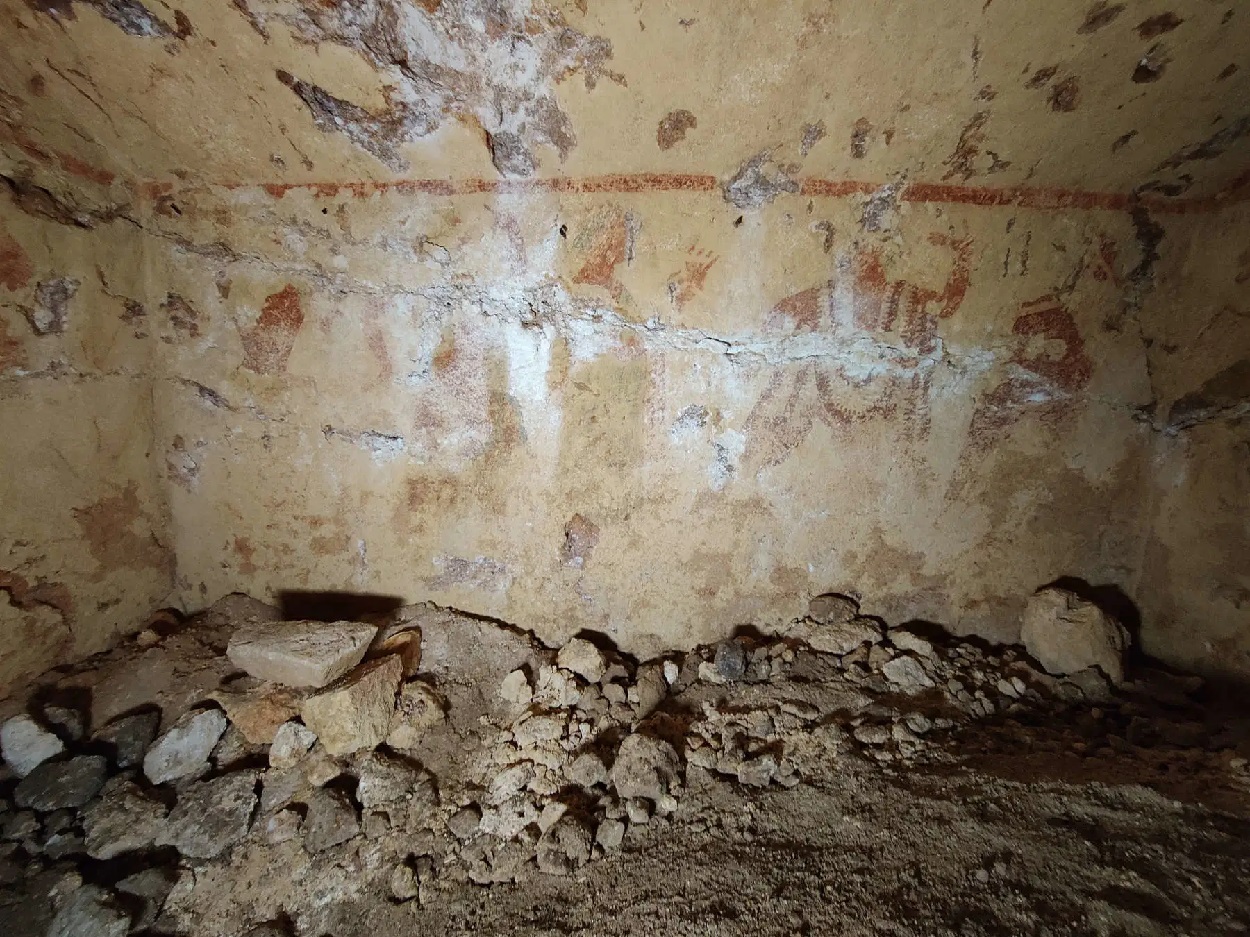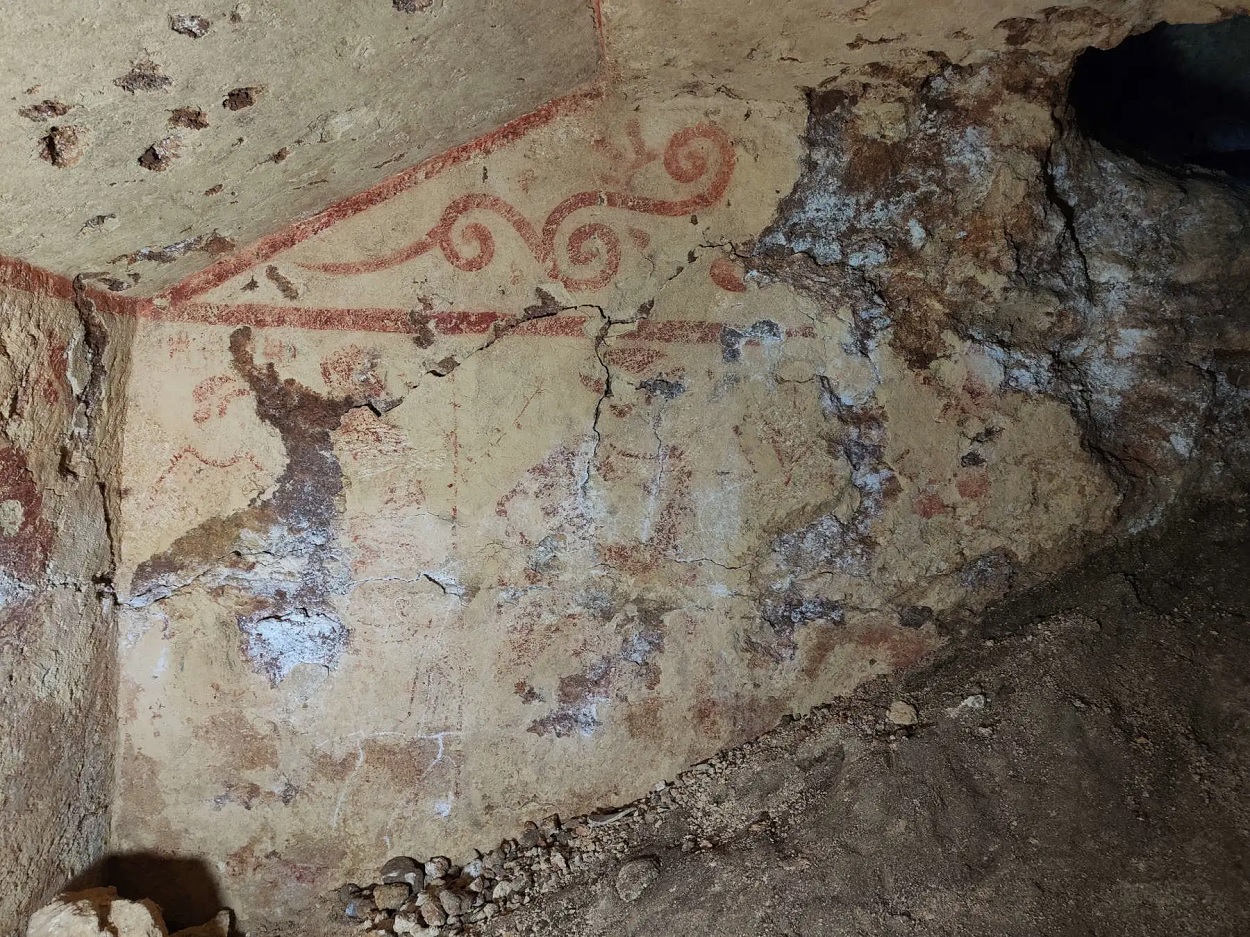Archaeologists have announced the discovery of a painted tomb at the Etruscan Necropolises of Monterozzi, located east of Tarquinia in Lazio, Italy.
Though the discovery dates back to late 2022, it was only recently announced by the Superintendence of Viterbo, revealing a painted tomb chamber decorated with vibrant wall frescoes.
During an inspection of looted and disturbed tombs, the Superintendence discovered a collapsed wall, which unexpectedly revealed a well-preserved burial chamber—now designated as Tomb 6438.
To prevent further looting and damage, the Superintendence kept excavations of the site confidential until the tomb could be properly secured and preserved. Inside the tomb are frescoes depicting scenes of dancing and ancient workshops, which archaeologists have dated to the mid-5th century BC.
The left wall has imagery of men and women dancing around a dressed flute player, while the right wall depicts a metallurgical workshop, possibly representing the mythical forge of Sethlans (the Etruscan counterpart to Hephaestus).

The back wall depicts a woman, possibly the deceased, alongside two young figures, though part of the scene has been lost over time due to looters breaching the chamber by drilling through its sealing.
This forced entry triggered a collapse from an overlying tomb that sent debris and artefacts spilling into the burial space. Although few funerary objects remain, excavations of the debris have unearthed fragments of Attic red-figure pottery.
“The extraordinary level of the paintings,” says the superintendent Margherita Eichberg , “is already evident in the first restoration, carried out by Adele Cecchini and Mariangela Santella, which highlights the refined details of the figures of the flute player and one of the dancers.”
Daniele Maras adds: “For decades, this is the first tomb painted with a figurative frieze to be discovered in Tarquinia, and it promises to be very intriguing for its history, its artistic level and for some of the scenes depicted, which are unique.”
Header Image Credit : Superintendence of Viterbo
Sources : Superintendence of Viterbo





